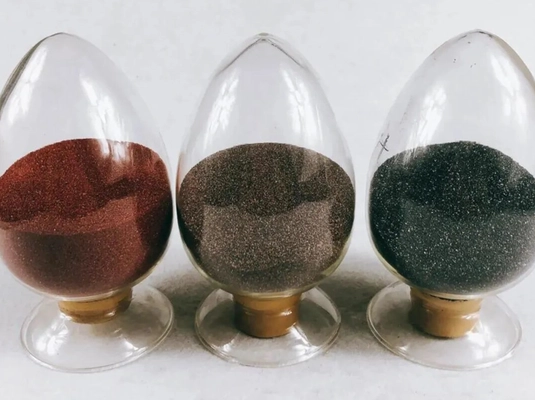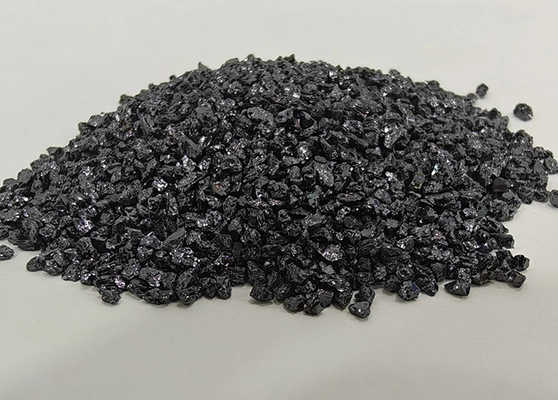Quick Answer: The particle size composition of abrasive grains refers to the distribution of grain sizes within a batch, typically measured in mesh or FEPA standards. As a manufacturer, we control particle size strictly through sieving and classification processes to ensure consistency in grinding, polishing, and blasting applications.

Table of Contents
- Definition of Particle Size Composition
- Why Particle Size Matters
- How Particle Size is Measured
- Industry Standards (FEPA / JIS / ASTM)
- Factory Classification Process
- Typical Size Ranges & Properties
- Applications by Particle Size
- FAQ
- References
Definition of Particle Size Composition
Particle size composition describes the percentage distribution of different grain sizes within an abrasive product. For example, a batch of brown fused alumina F24 grit will contain a controlled proportion of particles retained between two standardized sieves. Maintaining this balance ensures uniform cutting performance and predictable behavior during use.
Why Particle Size Matters
In abrasive manufacturing, particle size directly affects performance:
- Cutting ability: Coarse grains (e.g., 16 mesh) cut faster but leave rougher surfaces.
- Surface finish: Fine grains (e.g., 600 mesh) produce smooth finishes suitable for polishing.
- Efficiency: Consistent composition reduces energy consumption in grinding.
- Equipment wear: Proper sizing prevents uneven wear on tools and machinery.
How Particle Size is Measured
Particle size composition is determined using:
- Sieve analysis: Grains are passed through a series of sieves with standardized openings.
- Laser diffraction: Advanced method for fine powders & microgrits.
- Microscopy: For shape and morphology inspection.
Industry Standards
We follow internationally recognized grading systems:
- FEPA (Europe): F-grits for bonded abrasives, P-grits for coated abrasives.
- JIS (Japan): Defines micro-powder sizes, widely used in Asia.
- ANSI/ASTM (USA): Standard test methods for sieve analysis.
Factory Classification Process
In our plant, abrasive grains undergo multiple classification steps:
- Crushing and initial screening of fused blocks.
- Magnetic separation to remove metallic impurities.
- Precision sieving using calibrated mesh sieves.
- Secondary air classification for micro-powders.
- Final inspection and packaging according to FEPA or JIS standards.
Typical Size Ranges & Properties
| Grade | Particle Size Range (µm) | Typical Application |
|---|---|---|
| F16 | 1180–1400 | Heavy grinding of metals |
| F46 | 300–355 | General-purpose grinding |
| F120 | 106–125 | Surface finishing |
| F220 | 53–63 | Fine grinding, lapping |
| F600 | 10–20 | Polishing, precision finishing |
Applications by Particle Size
- Coarse Grains (F12–F24): Stone cutting, heavy-duty grinding.
- Medium Grains (F30–F80): Sandblasting, surface preparation.
- Fine Grains (F100–F240): Precision grinding, coated abrasives.
- Micro Powders (F280–F1200): Polishing lenses, semiconductor wafers, ceramics.
Frequently Asked Questions (FAQ)
What does "mesh" mean in abrasive grains?
Mesh indicates the number of openings per inch in a sieve. Higher mesh = smaller particle size.
What is the difference between FEPA F and P grades?
F grades are used for bonded abrasives, while P grades are for coated abrasives like sandpaper.
How do manufacturers ensure consistency in particle size?
Through calibrated sieves, air classification, and strict quality control according to FEPA or JIS standards.
Can particle size affect abrasive recycling?
Yes. Coarser grains are more durable and recyclable, while finer powders degrade faster in use.
References
- FEPA Standard 42-1:2011 – Grains of fused aluminium oxide and silicon carbide for abrasives.
- JIS R 6001 – Testing methods for abrasive grain size distribution.
- ASTM C136 – Standard Test Method for Sieve Analysis of Fine and Coarse Aggregates.
- ASM Handbook, Vol. 5: Surface Engineering (ASM International, 1994).
Request a Quote or Sample
Popular Products
Grünes Siliziumkarbid
View DetailsSchwarzes Siliziumkarbid
View Details